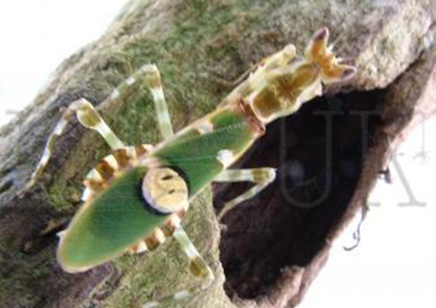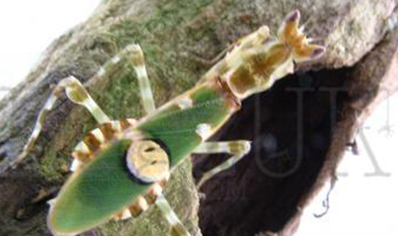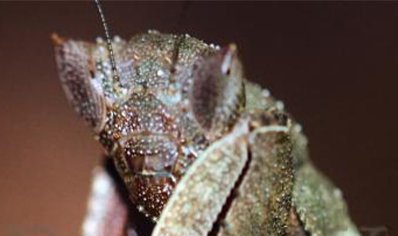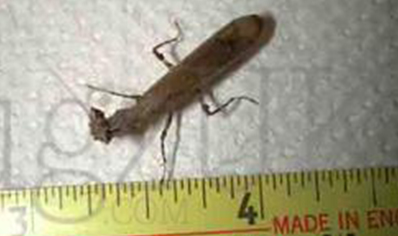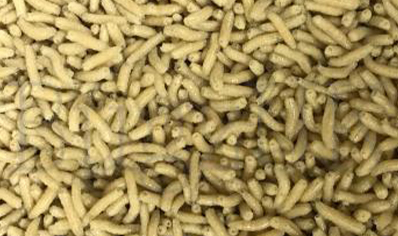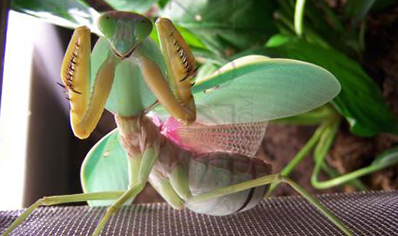Praying Mantis: Creobroter Pictipenis
Males grow to about 1.5 inches (3.8 cm) and females are slightly larger. They prefer a humid environment and live about nine months in captivity.
Taxonomic Classification
- Kingdom: Animalia
- Phylum: Arthropoda
- Class: Information not available
- Order: Information not available
- Family: Mantidae
- Genus: Creobroter
- Species: PICTIPENIS
Order Now!
Minimum order £10 + Postal Charges
All payments are made through a secure payments system click here for more information.
Size L2/L3 Nymph
£0.00
Out of Stock
Size L4 - L5 Nymph
£0.00
Out of Stock
Size L6 - L7 Nymph
£0.00
Out of Stock
Adult Male
£0.00
Out of Stock
Adult Female
£0.00
Out of Stock
Care Sheet
CAGE SET UP
This mantis, as an adult, is a small mantis and as such can have a relatively small cage set up, as minimum size it could be as small as 15cm x 15cm x 15cm (height/width/depth), but should not be much greater than 30cm x 15cm x 15cm otherwise it may struggle to find its prey.Obviusly at smaller sizes through nymph sizes L1 to L8, the housing can be considerably smaller, though the basic rule is that the cage height should be at least three times the full length of the mantis from the likely perch site to allow the mantis to successfully moult. The cage set up can be as simple as having a stick laying across the cage from bottom corner to opposite top corner to allow the mantis a perching site, or it can be full of sticks and artificial or live plants, whatever you prefer. The more detailed set up is normally to be pleasing to the owner rather than necessary for the mantis' well being !!
This mantis should be kept singly as it exhibits cannibalistic tendencies certainly after L3 growth.
This mantis comes from a warm moist climate and so the cage set up should aim to emulate the mantis' natural conditions. Aim for a day time temperature of 25 to 26 degrees with a slight drop in temperature at night by 2 or 3 degrees. This heat can be achieved by use of a proprietory heat pad on one side, or under one side of the cage, or it can be achieved by using a light bulb above the cage, using a white higher wattage light bulb in the day and a red light of lower wattage at night will achieve a temperature drop, both linked to a timer (the red light is not seen by mantis)
This mantis needs both ventilation to avoid stale air and mould growth, but also a reasonable humidity, therefore a light mist spray will be required most days, normally in the morning so that it dries out through the day.
Once the set up is complete, it is time to introduce your mantis. It will likely instinctively move to the top of the cage as in the wild it will move to the top of the shrub or tree that it is in and perch near the top waiting for its prey
Water is not required in the form of a water dish, as this mantis will drink from the water droplets when sprayed and will get liquid from its prey.
FEEDING
This mantis should be fed prey items roughly equal to the length of its abdomen. Small hatchlings at L1 and L2 will take fruit flies and thereafter you can feed them larger flies, crickets or anything that moves which is of the right size. Do not feed the mantis so that its abdomen becomes distended. One large cricket can last an adult a week !
BREEDING
Males are easy to differentiate from the female once you see both next to each other, they are both winged but the male is much thinner than the female and the abomen does not extend past the wings as it does in the female. Also, the male will have 8 abdominal segments against the females 6 segments.
Allow a week to 10 days as adults before pairing and always put the female in the males enclosure, preferably in front of the male so that the male sees the female moving. Make sure that both adults are well fed, especially the female. This species does not normally cannibalise the male during or after mating. The male will mount the female from behind and will stay locked like this for up to an hour.
The female will feed as voraciously as it can until it is ready to lay its ootheca (eggsac), at which time, it will select a suitable site and begin to lay its eggs (normaly 30 to 40 eggs in an ootheca). The ootheca is laid along the bottom or side of a twig and is a creamy colour standing proud of the twig by about 3 to 4mm. If hatching elsewhere, cu the wig with the ootheca on rather than prise the ootheca off the branch.
Oothecas may be laid every 15 to 20 days and normally hatch within 30 to 40 days . After the first moult, the nymphs are not cannibalistic, but can be after the second moult. Often one mating will enable the female to lay multiple fertile oothecas.

